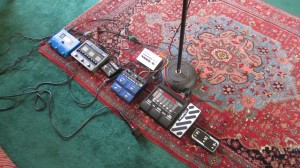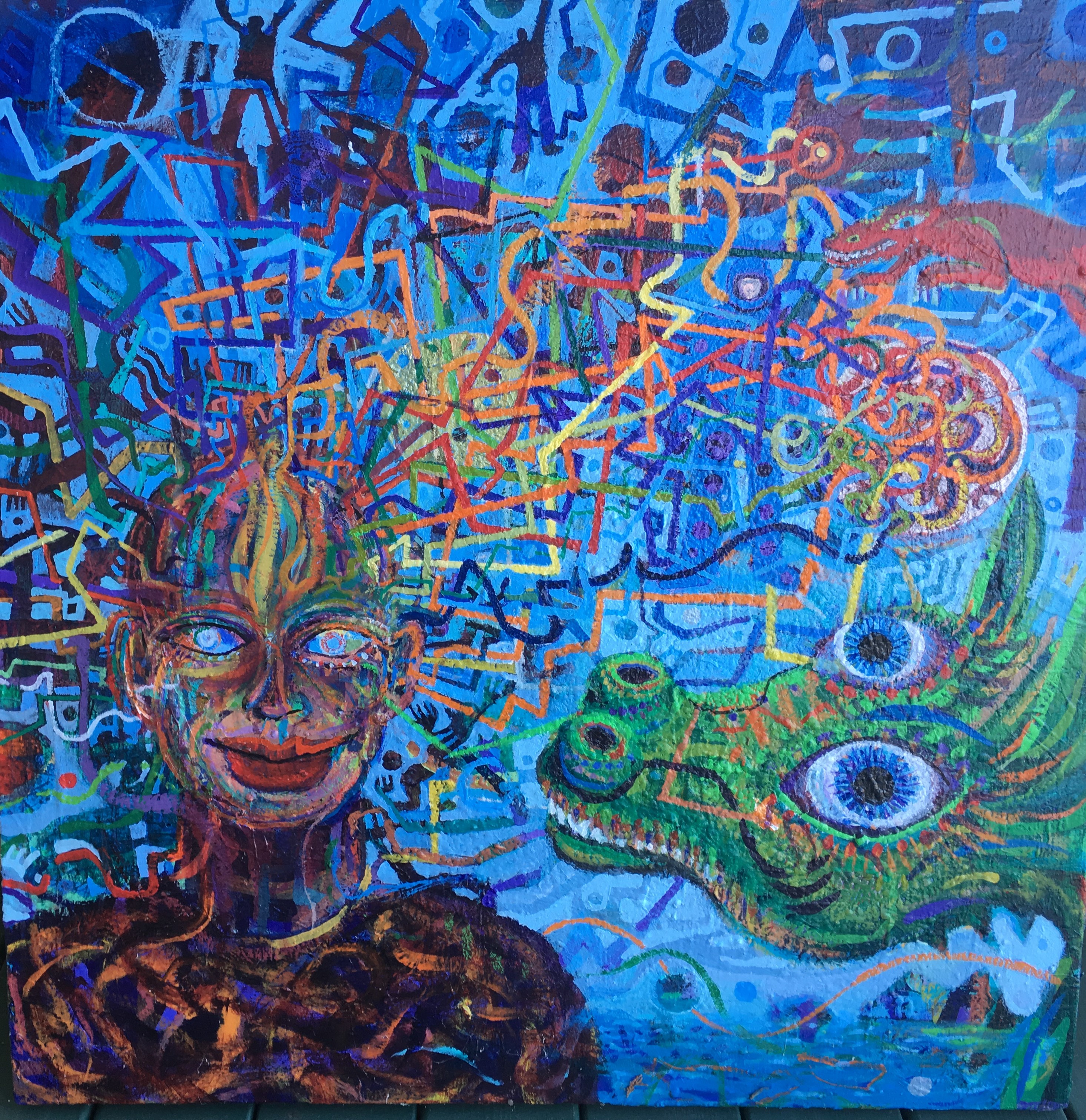
My Two-Modeler Rig: A Few New Insights
I’m still developing patches for the Zoom G3, and I’m starting to think more about designing patches expressly to be used in combination with the Digitech RP355. (That’s a pretty selfish use of my programming time, given that I doubt most of my customers will ever run these two boxes at the same time. But whatever. My time, my sounds.)
One of the things I’ve learned is that for realtime performance, it’s useful to think of one device as supporting the other. If you think of both as the lead device, things get very complex very quickly, and the sounds tend to fight each other rather than complementing each other. If one’s there to support the other, then one has to stand out, and the other has to fill in, which makes things a lot simpler. The logical choice for me is to mostly use the RP as the lead instrument, because it’s the one with the footpedal, which is the most powerful tool I have on either of the devices for making the sounds expressive, and it’s also got the best set of modulation FX and reverbs.
Accordingly, I’ve created a very simple tone on the G3 that fills in a lot of holes. It’s a Matchless amp model, preceded by a compressor, with a touch of spring reverb. I’ve set the compressor high enough to make the tone from the amp model steady and loud, and the spring reverb adds a little depth and width to the sound. This tone isn’t interesting enough to be a really effective lead sound on its own, but if you put it together with an octave patch or an autowah patch on the RP355, it fills in the low-midrange frequency spectrum with plenty of power, leaving the RP355 to handle the big expressive moves. If I want something even bigger behind the 355, I can add pitch shifters, filters, and whatever else I like to the basic G3 setup.

My harp mic goes into a Radial BigShot ABY box, where the signal is split; I can use the ABY’s footswitches to send the signal to my RP355, my G3, or both at once. The outputs from the Zoom and the RP go to a 4×1 Nady mixer. The (mono) output from the mixer goes into the mono line input on the Digitech JamMan Stereo looper. My vocal mic goes into a TC Helicon Voicelive Play, and the output from the Voicelive goes to the mic input on the JamMan. So the JamMan is where all the signals are ultimately combined, and the (mono) output from the JamMan feeds the Peavey KB2 keyboard amp. Finally, there’s a footswitch that controls some of the functions on the JamMan; the one I use most is removing the most recently recorded loop layer.
That’s seven pieces of gear on the floor, four of which have their own power supplies, which is a lot of cables, a lot of power supplies, and a lot of real estate to manage. Cable overload is a potential issue here, but as you can see, I’ve put some time into making the cable setup simpler and more compact, and it’s definitely worth it to get these huge, cool sounds.
One good multiFX device by itself is very nice. Two opens up a world of even bigger sounds. I like big. I’m stickin’ with it.
Related Posts
1 Comment
Leave a Reply
You must be logged in to post a comment.
WHAT’S NEW
Categories
- Audio/Video
- Blog
- Blue Future
- Digitech RP Tricks and Tips
- Discography, CDs, Projects, Info, Notes
- Featured Video
- For the Beginner
- Gallery
- Hunter's Effects
- Hunter's Music
- Huntersounds for Fender Mustang
- Meet the Pros
- More Video
- MPH: Maw/Preston/Hunter
- My Three Big Contributions
- Player's Resources
- Pro Tips & Techniques
- Recommended Artists & Recordings
- Recommended Gear
- Recorded Performances
- Reviews, Interviews, Testimonials
- The Lucky One
- Uncategorized
- Upcoming Performances
- Zoom G3 Tips and Tricks

Yes! I also think of adding Zoom MS50G to my Line6 POD HD!